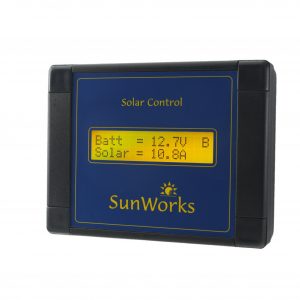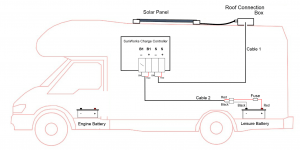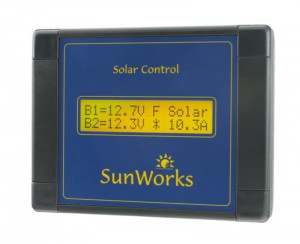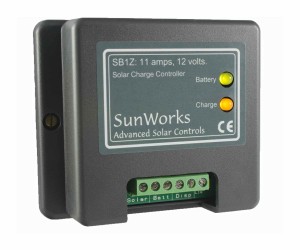Solar panels: A little technical help for motorhome, boat and caravan owners. Part 2
A few notes for those of you who would like a little more information about installing solar panels and solar panel charge controllers on a motorhome, yacht, narrowboat or caravan.
In the first part of this series, we discussed the various types of solar panel that can be used on motorhomes, boats, yachts, narrowboats and caravans. In this second part we discuss the most important part of your solar panel system, solar panel charge controllers.
Why the ‘most important’? Because compromising on the charge controller will seriously affect the health of your batteries. Choosing a poor-performing charge controller will shorten the life of your batteries, costing you more on the long run. A good quality solar panel charge controller will maximise the charge in your batteries and extend battery life considerably.
Solar panel charge controllers. The ‘heart’ of the system.
Your solar panel system must have a charge controller to ensure complete and safe battery charging. A good quality charge controller will protect the battery against overcharging, maximise the charge into your battery, and prolong battery life. A poor charge controller will steadily damage your batteries, costing you more in the long run.
All SunWorks solar panel charge controllers are designed and built in-house for performance, appearance, and ease of use. We design our controllers specifically to meet the needs of boat, motorhome and caravan owners.
Our unique PWM charging method will keep your batteries in peak condition and extend battery life.
The best selling SunWorks charge controllers have a no-nonsense LCD display to keep you informed about the performance of your solar panel and the state of your batteries. The display shows you exactly how much current is flowing from your solar panel. You will also see the voltage of your battery increase steadily as it charges up.
With a choice of colours, and using our concealed wiring arrangement, these controllers will enhance any motorhome or boat interior.
The SunWorks range includes single battery controllers and dual battery controllers.
A dual battery charge controller will charge your domestic and engine batteries from the same solar panel. Our dual battery controllers use the SunWorks unique DuoPWM charge system ensuring that both batteries are optimally charged.
A special ‘winter mode’ prevents either battery from falling too low in low-light or out-of-season conditions. Perfect if you have equipment connected to your engine battery such as an alarm system.
We also manufacture the SunWorks Z-Series charge controllers. These lower cost controllers do not have a LCD display and are designed to be fitted out of sight, close to the battery.
Instead of an LCD display, two flashing LEDs indicate the solar panel current and the battery state-of-charge. As the solar panel produces more current, the yellow LED stays on for longer. The green LED indicates the battery charge level in the same way.
If you need more information from your Z-series controller, we also produce the Z-series LCD Remote Display. This optional Remote Display can be used with all Z-Series charge controllers, and can be positioned anywhere that is convenient, so you can keep an eye on your system performance. The display can be added to your system at any time. Connection to the display is by a thin cable that can easily be hidden from view behind lockers or trims. The supplied cable is 4 meters long but can easily be extended to 10 meters as required.

Connection diagram for a single battery charge controller with one solar panel. Connections for a yacht or boat is very similar.
Connecting your solar panel to the charge controller is straight forward. We will be talking about this in a later part of this article but for now this diagram gives some idea of the wiring needed.



